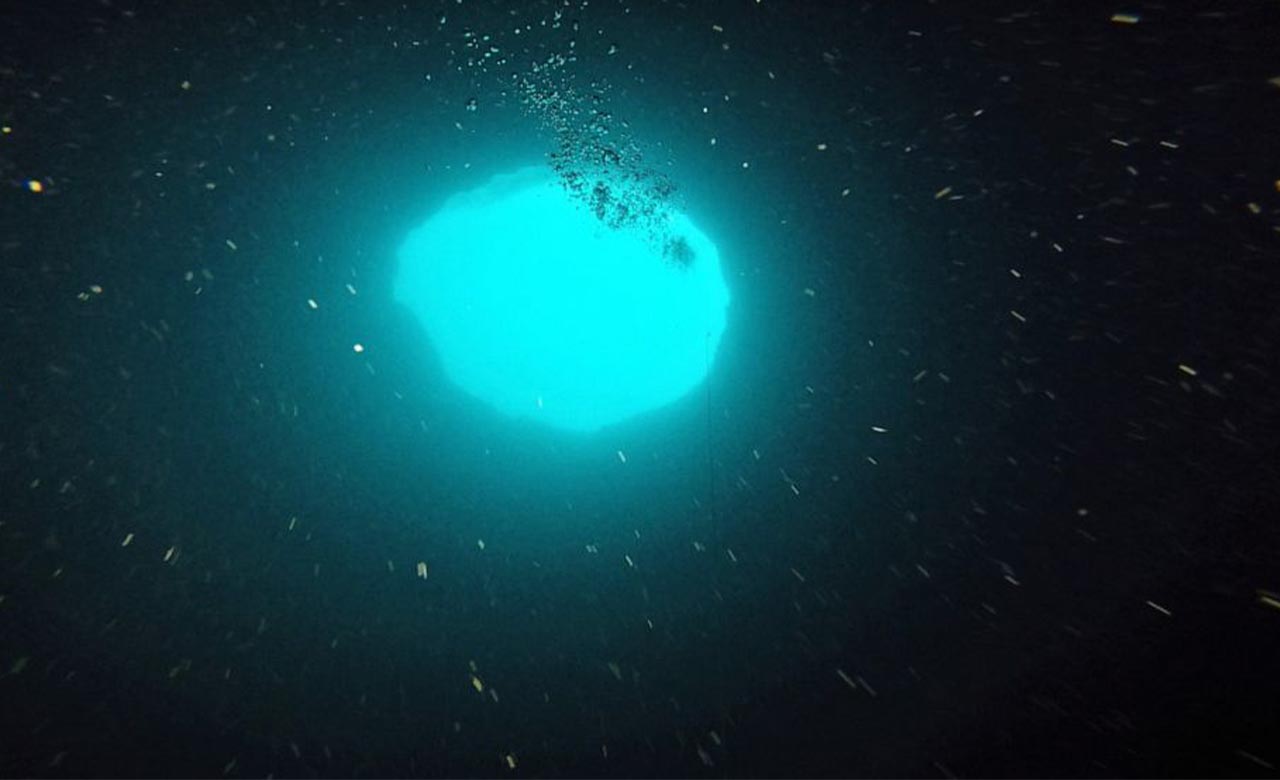This phenomenon is located about 425 feet below the water’s surface. Scientists went flocking to Florida’s Gulf Coast for a glimpse of a mysterious 425-feet-deep “blue hole” on the ocean floor. The glowing mystery hole, about 155 feet below the water’s surface, is similar to the sinkholes seen on solid land, according to the National Oceanic and Atmospheric Administration. The site, dubbed the “Green Banana,” has been an interesting topic for scientists and deep-sea explorer/voyagers who’ve been hoping for a brief look of the phenomenon from afar.
Surprisingly, the first reports of blue holes came from fishermen and recreational divers. In general, the hole appears to host diverse biological communities of marine life, including corals, sponges, mollusks, sea turtles, and sharks. NOAA [National Oceanic and Atmospheric Administration] scientists already have collected 17 water samples from the area surrounding the hole along with four samples.
NOAA [National Oceanic and Atmospheric Administration]
However, they have also discovered two dead but intact small tooth sawfish, an endangered species, at the bottom of the hole. The remains of one of the animals were recovered for examination. NOAA scientists intend to set out on a new mission to a second, deeper area of the hole in August. That mission will consist of a team of scientists from Mote Marine Laboratory, Florida Atlantic University, Georgia Institute of Technology, and the U.S. Geological Society, according to NOAA.

Researchers are keen in studying the seawater chemistry in the holes for its unique qualities. A Very Little is known about blue holes due to their lack of accessibility and unknown distribution and abundance,”
The opening of a blue hole can be several hundred feet underwater, and for many holes, the opening is too small for an automated submersible.
NOAA said in a Statement.
The Mysterious Blue Hole
The NOAA said,” Researchers don’t know much about blue holes, but scientists are hoping to learn if the holes are connected to Florida’s groundwater or if there is groundwater intrusion into the Gulf of Mexico. They’re also looking to see if a particular blue hole is secreting nutrients or harbors microenvironments or new species of microbes. Little is known about blue holes due to their lack of accessibility and unknown distribution and abundance,”
The opening of a blue hole can be few hundred feet underwater, and for many holes, the opening is too small for an automated submersible. They’re also looking to see if a particular blue hole is secreting nutrients or harbors microenvironments or new species of microbes.






